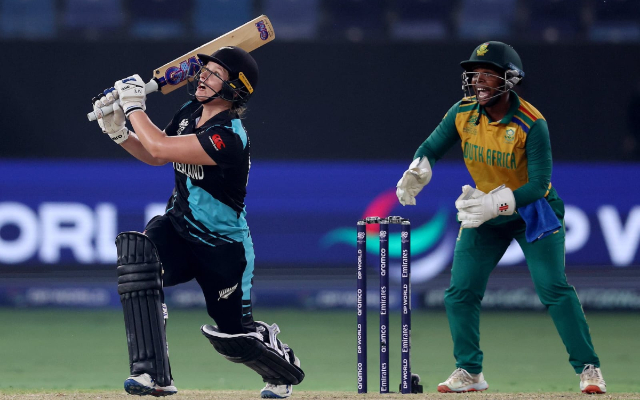
Snehasis Mukherjee in Dubai
New Zealand made history last night at the Dubai International Stadium by defeating South Africa in the final of the ICC Women’s T20 World Cup, securing their first-ever title. Player of the tournament and highest wicket-taker, Amelia Kerr, was also named player of the match. However, while setting a total of 158 runs, Brooke Halliday’s contribution was equally significant. Her crucial 38-run knock from 28 balls supported Kerr at the other end, helping to build a 57-run partnership for the fourth wicket from 44 balls.
It ended up being Halliday’s highest individual score in her career in this format, and what a stage to achieve it on. Before this tournament, she had scored 295 runs in 28 innings at an average of 12.83 and a strike rate of 90.77, with a previous high score of 33 against England—her only 30+ score until then. However, in this tournament, she played key cameos down the order, particularly in pressure situations like the semifinal against West Indies, where she scored 18 off 9 balls with a strike rate of 200. Her contribution was critical on a tricky, slowing Sharjah wicket. Then, in the final, she batted at a strike rate of 135.71.
For the Latest Sports News: Click Here

Halliday finished the tournament with 96 runs in five innings, at an average of 19.20 and a strike rate of 124.67—much higher than her career numbers, underscoring the crucial impact of her performances. There is a clear pattern to her batting, as she often looks to play shots behind square using cuts, scoops, and conventional as well as reverse sweeps. It was she who ended the boundary drought of eight overs in the final, hitting Sune Luus for consecutive boundaries in the last two deliveries of the 14th over.
When asked about her approach in the mixed zone after the final, she accepted the fact with a bright smile on her face and explained: “I think when we were preparing for this T20 World Cup in Bangladesh, we kind of knew that the conditions were probably going to be quite difficult and be a bit more spin friendly. So, with that looking probably maybe behind square with the reverse or a sweep kind of gives you a little bit more options, I think. It was quite hard to really hit the boundary at times with the lack of pace. Looking behind square is actually sometimes bit easier, despite me getting out to it but the reverse has got me a little bit of run since the tournament. So, it has paid off.”

In addition to her batting, Halliday also bowled twice in the tournament, picking up three wickets—two against Australia in Sharjah and one in the final against South Africa. Overall, it was an outstanding tournament for her, alongside young White Ferns like Georgia Plimmer, and Eden Carson, especially the impactful contributions she made when the team needed them most, mainly in the knockout stages.




